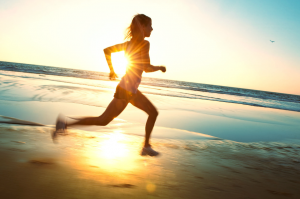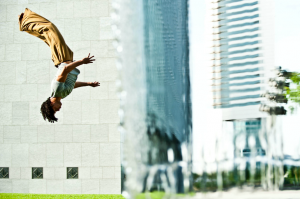 Hi friends, Megan here – I’m Chase’s primary on-staff producer. We just wrapped up a commercial shoot for a major sporting goods company and it required a monster amount of production. These tips are fresh on my mind and since it was a highly specialized sport shoot on a short time-frame (ie: challenging from a production standpoint) I thought I’d talk a little about the casting process for this type of job.
Hi friends, Megan here – I’m Chase’s primary on-staff producer. We just wrapped up a commercial shoot for a major sporting goods company and it required a monster amount of production. These tips are fresh on my mind and since it was a highly specialized sport shoot on a short time-frame (ie: challenging from a production standpoint) I thought I’d talk a little about the casting process for this type of job.
First, as you start to think about casting, you might want to consider the specific factors that are most important to both the client and photographer.
The LOOK (ie 6′ tall and blonde with blue eyes and long flowing hair)
If so, you probably want to start with your local talent agencies. You can find these online under ‘model’ or ‘talent’ agencies. They are abundant in most major metropolitan areas.
The SKILL (for this job it was athletic ability/running)
If so, you may want to look for top-tier athletes in the given sport. You could reach out to local athlete groups, yoga studios, for instance, or running clubs. If you were shooting an ad for the circus you might need to find a juggler. There could be specific experience that your models need. You could also consider enlisting the help of a seasoned casting agent, who will be able to source potential talent from a variety of places. They, like model agencies, are abundantly available in most metropolitan cities worldwide.
The BUDGET.
Depending on your budget, you might be able to go world class with the talent from said agency above… OR…you may want to consider casting “real people.” That is, folks who probably aren’t represented by an agency and will work for a lower day rate, depending on their level of experience. These can be friends, part time models, or people you spot on the street who have a look you’re after. REMEMBER when sourcing these people: they usually have no experience, so you’re trading experience for a look. Sometimes that works great – other times it can cost you a lot because your production doesn’t move along as well as it should, as quickly as it should, with the right facial expressions, experience, etc. It’s a balancing act – and you usually get what you pay for.
In our most recent case for the job at hand, it was a combination of the above factors (and it often is…). We needed to find talent who were trained athletes with some experience modeling so they were comfortable running for a photographer – and within a well-defined budget. There’s a difference between folks who have been competing in track and field or marathons for years, and those who understand what it means to do it in front of a camera. Trust me. Athlete does not mean model and vice versa. The experience of understanding the need to repeat or hold certain body positions for the photographer comes from experience on photo shoots and will make the day run like clock work.
Since we were tasked with finding nine runners, we needed to be conscious of how quickly talent fees would add up. Enter Sports & Lifestyle Unlimited, an agency with branches in Portland and LA that represents highly skilled athletes. We were able to negotiate a fair rate for all parties involved…the model, the agency, and us. This was aided by the fact that we booked all but one of the models through them; you may have heard the terms “most favored nations” (everybody gets the same rate) or “economy of scale” (the more you use form one source or at one time, the easier it is to book for everyone, so there can be money saved…) used to describe our approach to this situation.
(other items that affect budget if you’re traveling models in for a shoot or having them for mulitple days or shoots for the same project…)
Travel days – what will you pay them for the time it takes to get to the shoot?
Shoot days – what is the daily rate for working in front of the camera?
Down days – what is the price for weather days or days when they’re at the shoot, but not in front of camera?
Per diems – this is a flat rate of money that you give models or production staff for non-shoot related meals. Guides for these amounts vary by region and are somewhat standardized… plenty of info on the ‘net.
Again, most agencies will work with you on these rates to arrive at something fair and reasonable.
 The kicker to REMEMBER about BUDGET: Model agencies, like the rest of us, do work to make money. As such, model and talent agencies will add a 20% fee on top of Travel, Shoot + Down days, so be sure to factor that into your initial estimate. This is standard, fair practice and how agencies get paid.
The kicker to REMEMBER about BUDGET: Model agencies, like the rest of us, do work to make money. As such, model and talent agencies will add a 20% fee on top of Travel, Shoot + Down days, so be sure to factor that into your initial estimate. This is standard, fair practice and how agencies get paid.
Back to our story… Once we had received the talent + model specs from the client (i.e. age, height, ethnic diversity, “look”), we contacted SLU and requested a package of guys and gals that fit the bill. One of the things that was absolutely mandatory for us was running ability, so we asked to see a video of each of the talent submitted in addition to their portfolios + current snapshots. This is standard practice. Don’t be afraid to ask for this. The last thing you or your client wants is to get a good looking model on set that either a)doesn’t look like the shots on the talent website (ie shaved their head or similar) or b)can’t do the thing you need them to do as well as was represented when on the phone during booking.)
In addition to video, you may want to ask really specific questions of the talent (usually via the agent, but can be direct to talent on occasion…) that relates specific to the jargon of the activity you were told they were “an expert” at… For example if you’re looking for rock climbers, ask “what kind of climbing shoes do they own?” or “what level do they boulder at?” For runners, it might be “what was the last running event they ran in?”. You get the picture.
Our selections.
After Chase reviewed all submissions, we sent our recommendations to the client for consideration. After carefully considering who would work best for each of the shots we were tasked to shoot, they sent their selects to us for booking. At this point, if you have a shooting schedule already mapped out, it’s relatively straightforward to figure out the which talent you’re shooting on which day. In our case, the schedule depended entirely on locations + weather, so we ended up booking all nine talent for all shoot days in order to give us maximum flexibility. This isn’t the most cost-effective solution, but in this case, it was the only option for our situation.
When it was all said and done, our running talent was top-notch and total sweethearts, to boot. Worth every penny!
Let me know your success stories, failures, or — of course– if you have any questions. In production, it’s all about resources and who you know, so Kate and I are happy to share what we’ve learned throughout the years as best we can here on the blog 🙂

















Great post! I’ve used SLU here in San Diego, and have been really impressed. It can be tough to find models w/ specialties in all sorts of sporting activities. W/ SLU I’ve often used talent that are athletes first, models second. That can take a bit longer to shoot (as you mentioned), but you get legit skills.
Also, if you have a campaign or client shoot coming up, you can usually test shoot w/ talent at most agencies for free to get a feel for how the talent works, what their strengths/weaknesses are, etc. The only catch is that you can’t use those images commercially.